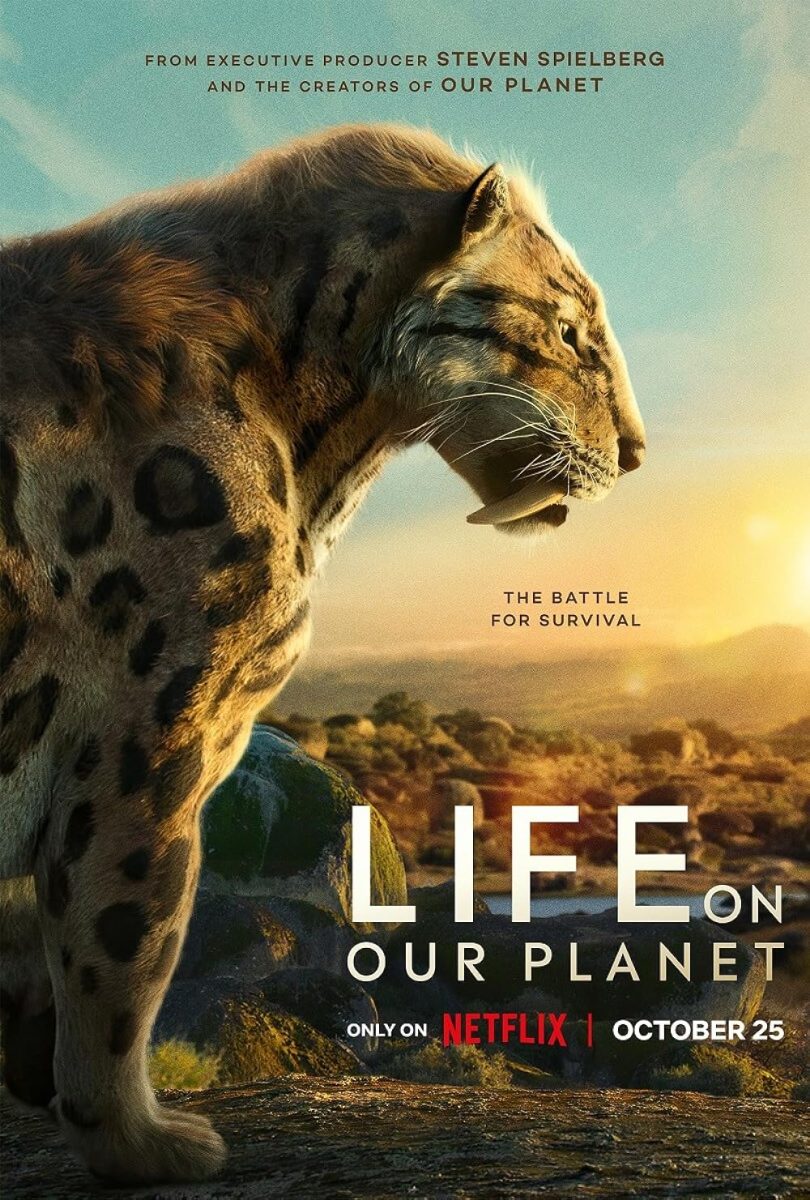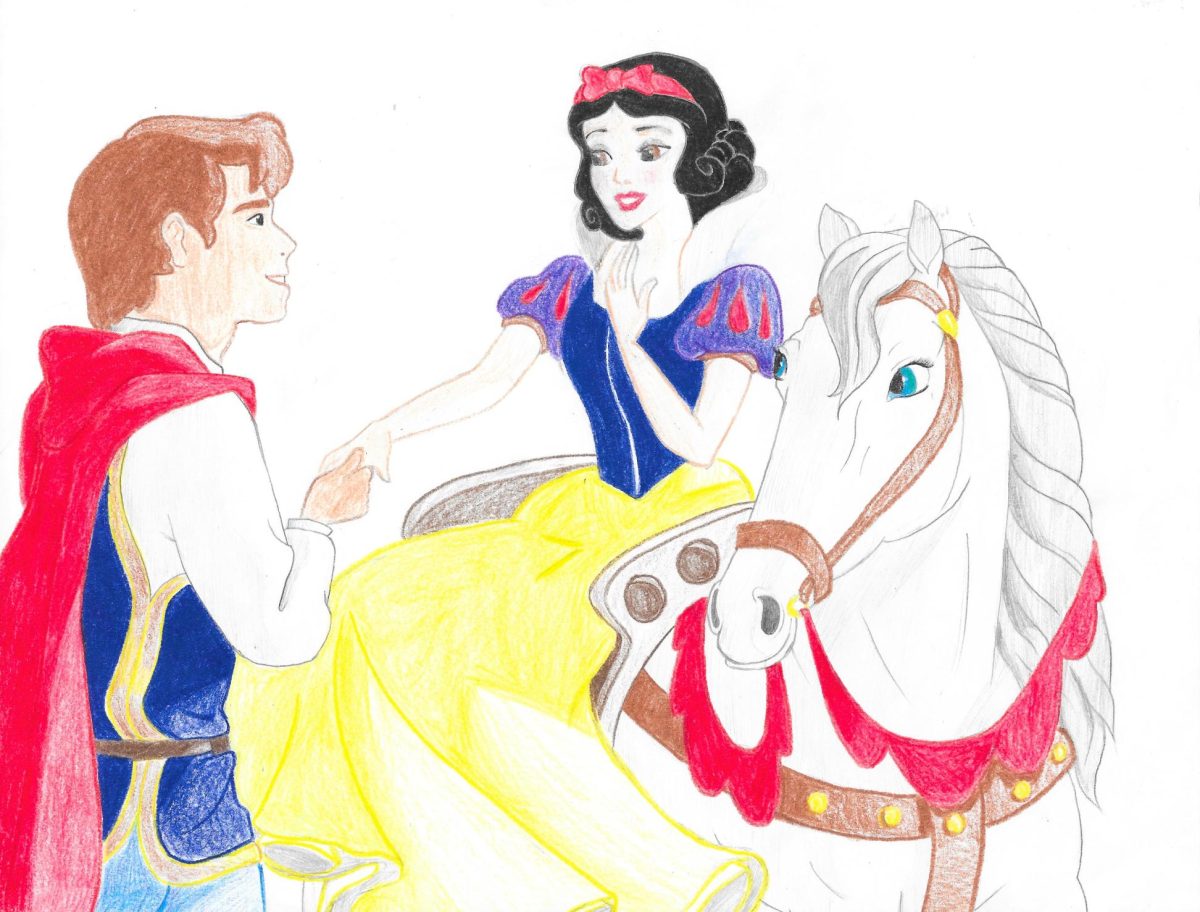After Prehistoric Planet’s release in 2022, paleo-documentaries have a new standard. Paleontological accuracy and representation of animals of the ancient past as animals instead of monsters is the top goal. With a general rise of interest in prehistoric species comes an increase in media on the topic, including things like games, documentaries, news stories, movies and more.
Recently Netflix released a trailer showcasing six new nature documentaries to come within the upcoming years, but the third documentary is my point of interest.
Life on Our Planet just dropped yesterday, and is an eight-episode show about the start of life to our present-day focusing on extinct fauna. Its second trailer reveals many new species not seen in the first, so in this article, I will explain the species and anything worth knowing for the viewer before they watch the series.
In the first seconds of the trailer, we see eggs hatching, and then it cuts over to a small unknown reptile. After it cuts to the first major segment showing an adult sauropod and some babies among plants. I assume it to be a diplodocus, a large Jurassic sauropod from North America. The adult is in a controversial posture with its neck down in a mostly straight line. Before 2009, diplodocus was thought to have a horizontal neck, but when a paper written by Michael P. Taylor came out that year, it crushed the idea that the diplodocus and other sauropods, like apatosaurus, had more vertical necks. This animal could just be putting its head down to inspect something for a short moment, but we do not have enough footage to say for certain. And there is the possibility that this may be a different species with a more horizontal neck, but we will just have to see.
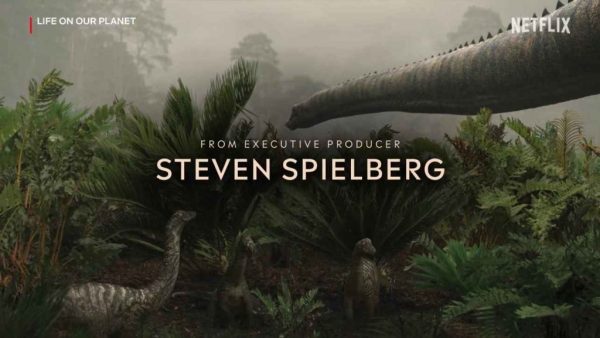
Following this, we see some waves and fish. In the next major scene, there is a clearing with a river and mountains behind, and large trees surrounding the sides making the viewer focus on a triceratops herd and two sauropods most likely alamosaurs. This area of North America during the Upper Cretaceous period was more commonly known as the hell creek formation. Although this scene is brief, it will probably have lots of screen time in the episode as this formation houses famous animals like triceratops and tyrannosaurus.
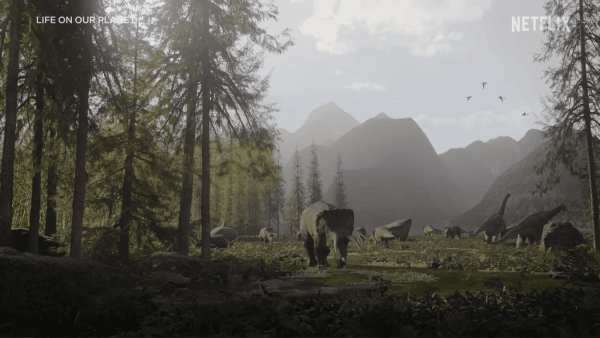
The next scene is a forest set in the late Jurassic in China with an anchiornis centered and stalking behind is some sort of unnamed theropod likely a type of allosauroid. Anchiornis is one of the few dinosaurs that we know what color it had in life. Pretty much everything is to point but the one nitpick is the base color. It is a little too blue when it was probably more light grey instead but besides this it is good.
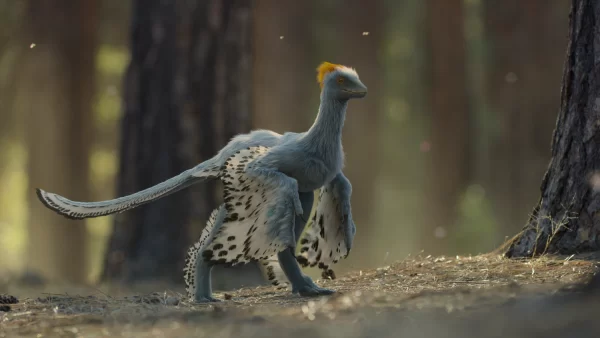
After that, we see a gorgonopsid of some sort. Famous species like inostrancevia or gorgonops itself might be the culprit. This is an especially accurate depiction featuring lips and hair really solidifying the stem-mammal appearance.
Following that we cut to two smilodons, only being there for a couple of seconds we don’t see too much of them but one thing that could be a problem is the body shape. From what we see they look a bit more robust than they should be as Smilodon was a lot more streamlined. It also has a prominent amount of fluff on its neck which is possible, but it most likely had none and was all straight hair. The final thing I want to point out is its namesake: the saber teeth, They are quite small and short which is the opposite of smilodon. But these could be juvenile forms still growing their teeth.
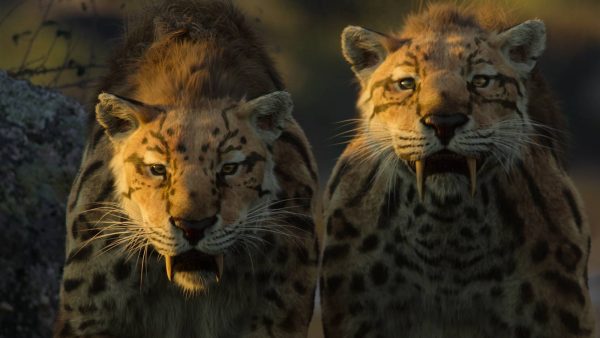
We then see, for a few seconds, some mammoths, two tyrannosaurs, bubbles, and a longer scene featuring some strepsodus crawling out of the water only to be gobbled up by an anthracosaurus. Following is an arthropleura crawling and then some waves.
With the next scene comes the next big discussion. It is likely some sort of endoceratid, or maybe endoceras itself. It is red in color with a long cone ending in a hood covering the eyes. The hood is a plausible feature depending if living Nautilus are related enough to endoceratids. The eye is also in the same boat, possible but not definitive. We see nine arms in the frame with a likely tenth out of the frame. This is a conservative amount of arms. From what we know, species like this could have even more arms depending on their family tree. But ten is a very simple and highly plausible amount. The arms are bare which is a less likely aspect, suction cups or hooks should line the underside of the tentacles, and like most cephalopods are used to catch prey or move objects.
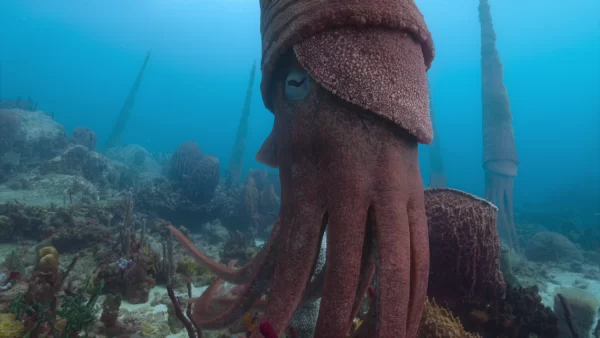
Dunkleosteus shows up for a second and looks quite good as recently a new paper by Russell K. Engelman, gave dunkleosteus a whole new look being a bit smaller and more compact. This rendition seems to be larger but not outlandishly so it works. Next, some lava spews, footage of a real Komodo dragon, and more footage of the anchiornis but now gliding.
Then, there is more mammoth screen time and we get our first look at the European cave lion. They did very well with the cave lion being quite fluffy and featuring little to no mane which is something we know from cave art. It also sports white fur, from hair samples collected we know European cave lions had lighter fur than modern lions. How much lighter, not sure and it can range from individuals. But the bright white is likely not the color they had in life. But some mammals today that live in snowy climates will change their fur color for winter to better match the environment so maybe they are taking a hypothetical stand.
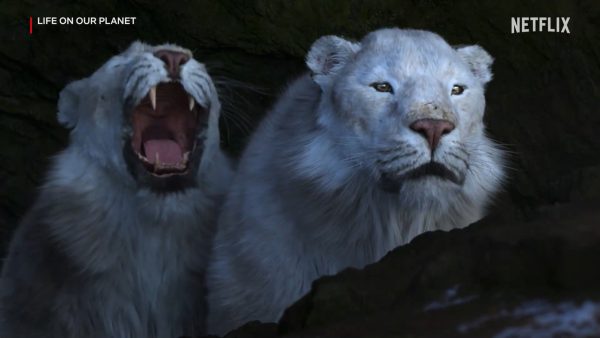
Our final scenes are a lystrosaurus, some titanosaurs feeding, and a tyrannosaurs. This wraps up the second trailer and from what we have seen this series will feature many different species, some famous and some not. Either way, this documentary will be a great learning opportunity for many, young and old, and will help spread informative knowledge to the general public on the amazing species lost to time. Maybe it will even spark a newfound interest in someone.



